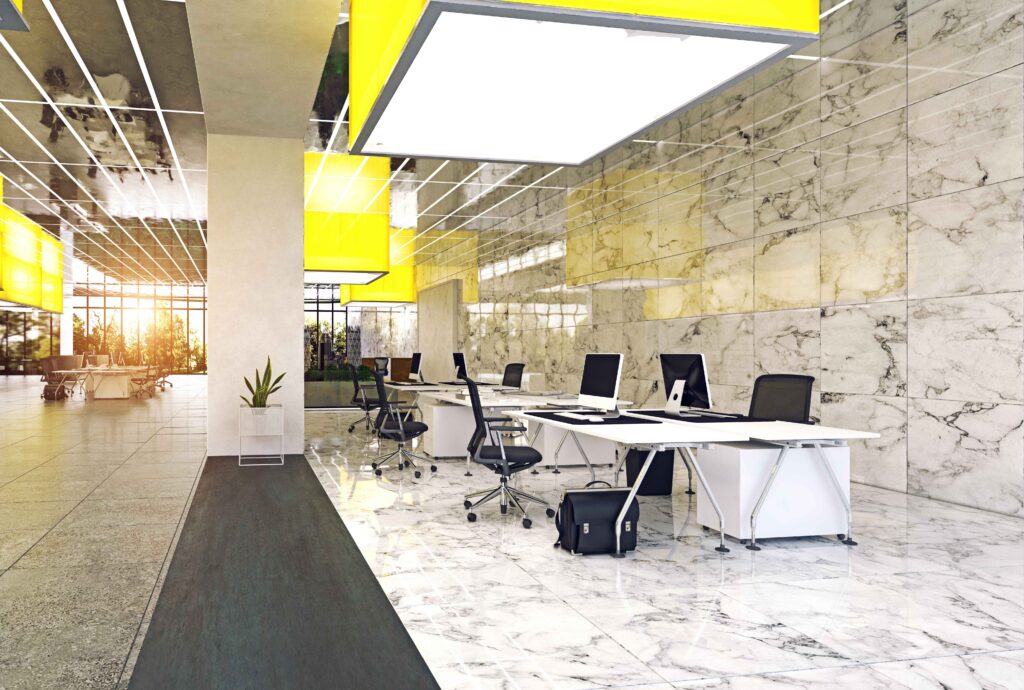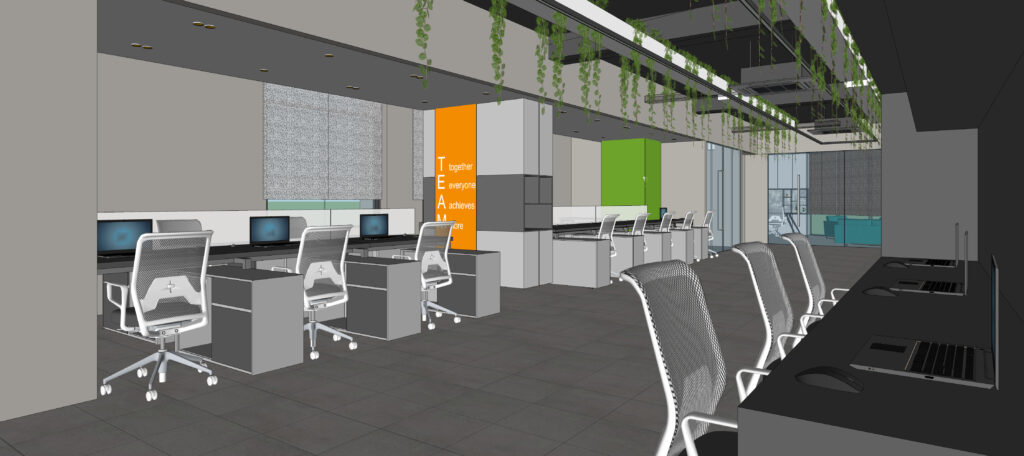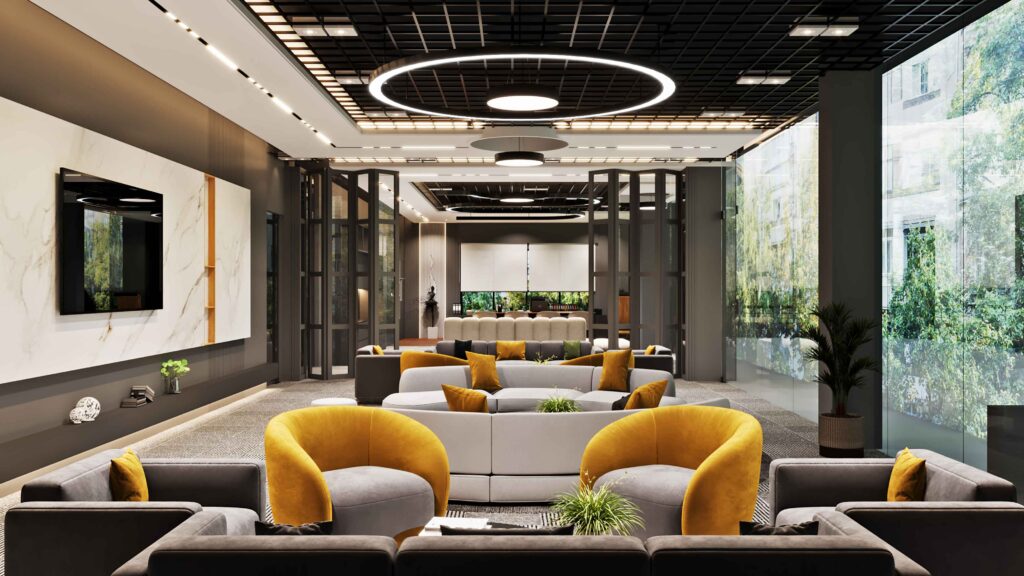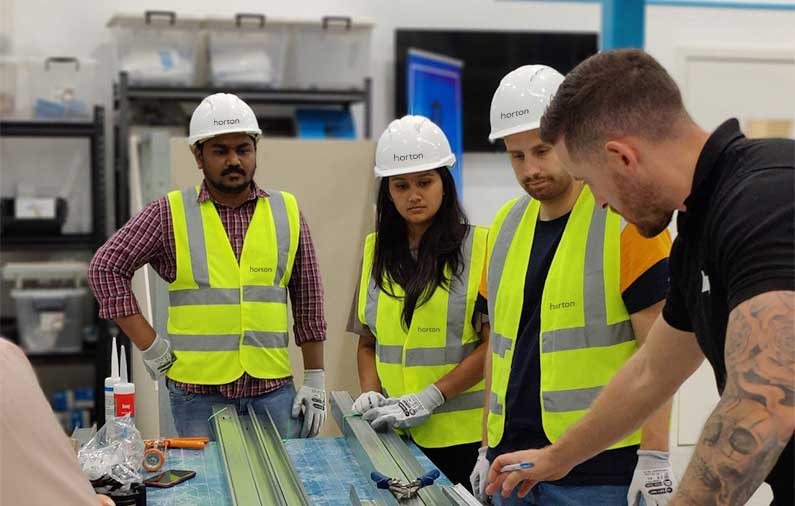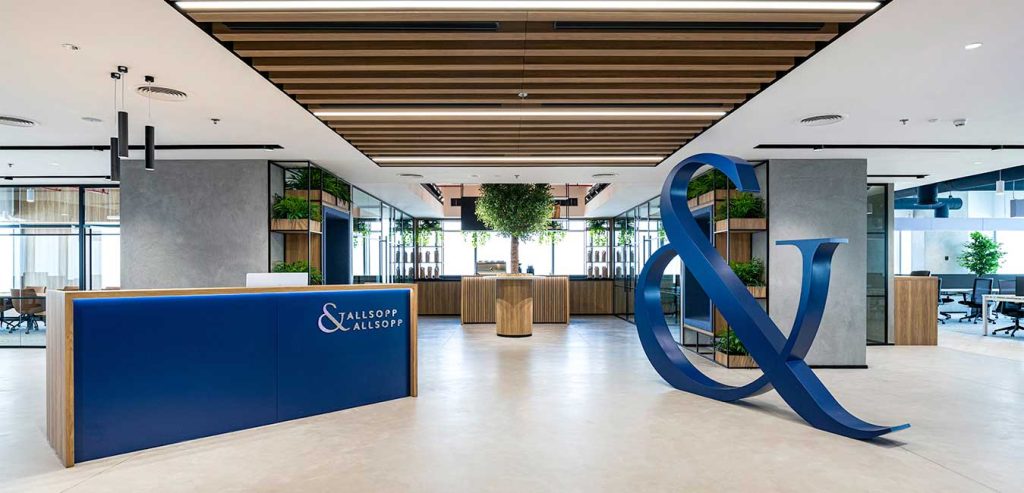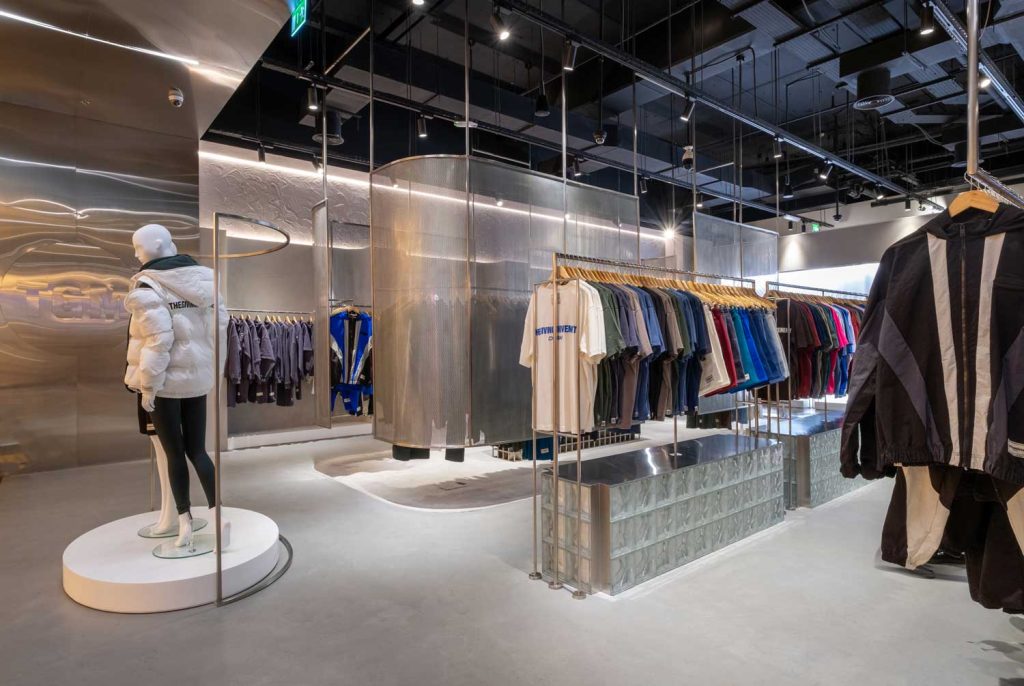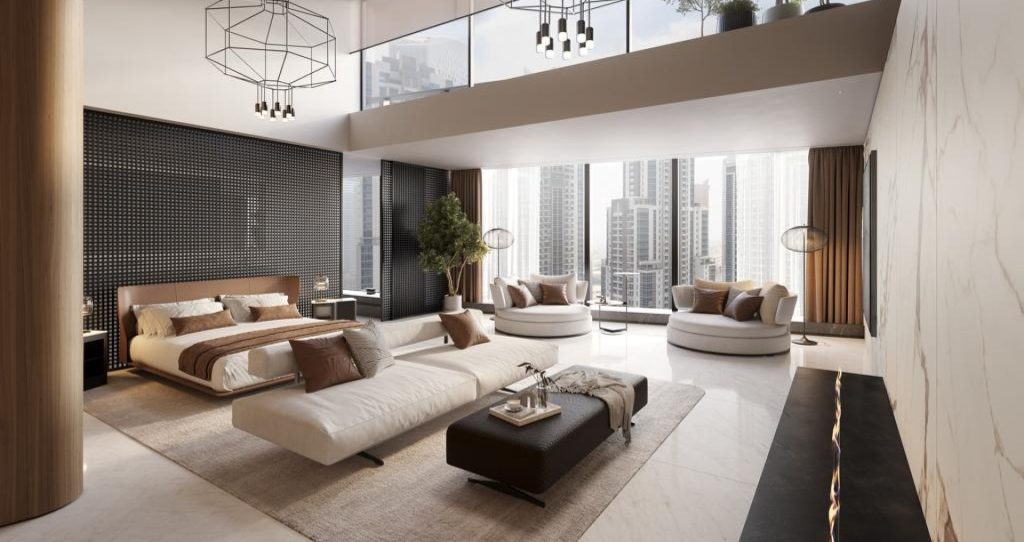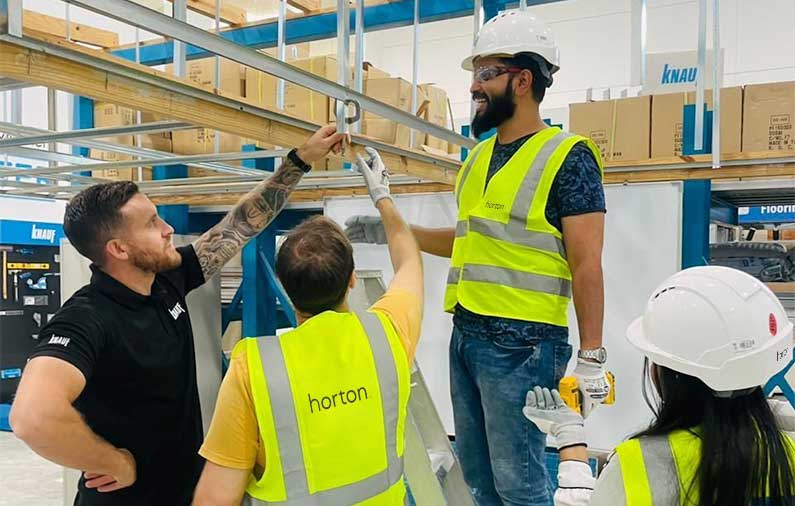Office Design 101: 4 Tips to light up your office
In our experience, whether you’re designing a new office or planning to renovate an existing one, workplace lighting is one aspect of office design that often goes overlooked. Lighting is a subtle yet important part of interior design and the proper lighting choices can make the difference between a good fit-out and a great one. A well-lit office can help improve employee well-being, boost productivity and help your workplace run more efficiently. Here are some things to keep in mind when making lighting choices.
1. Natural Light
It’s an old adage that the best lighting is natural light and it this case, it’s true. Offices with ample natural light report increased levels of worker happiness, motivation and productivity. Implementing features such as wide panel windows, skylights and other daylighting tools can improve the mood of an office and reduce your utility bills.
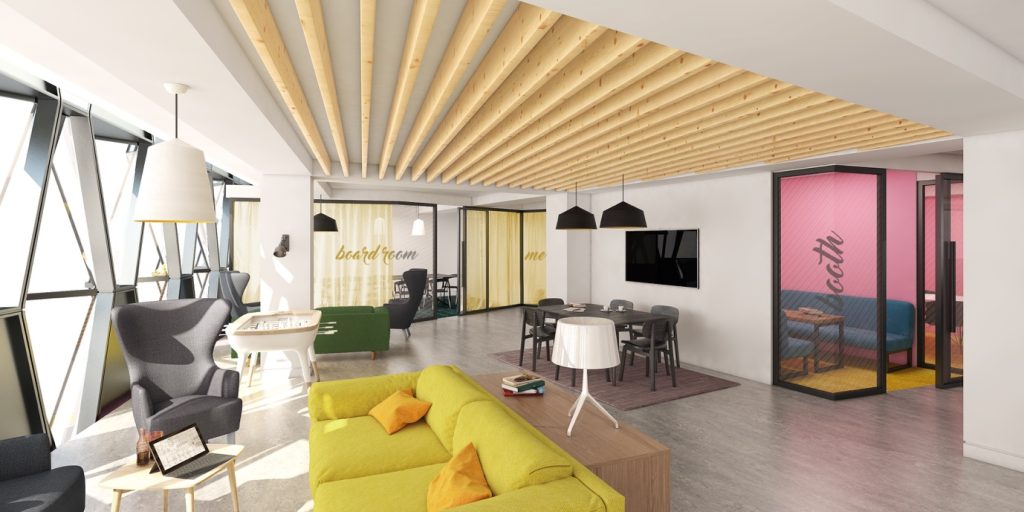
2. Lighting Levels
Choosing the right light level in your workplace helps your employees avoid tiredness and lack of concentration. The accepted minimum brightness level for work at computer screens is 500 lux. Higher illuminances between 750 and 1000 lux can aid in the processing and performance of visual tasks. In addition, lighting levels between 750 and 1000 lux is ‘stress free’ and can aid in the work performance of older employees.
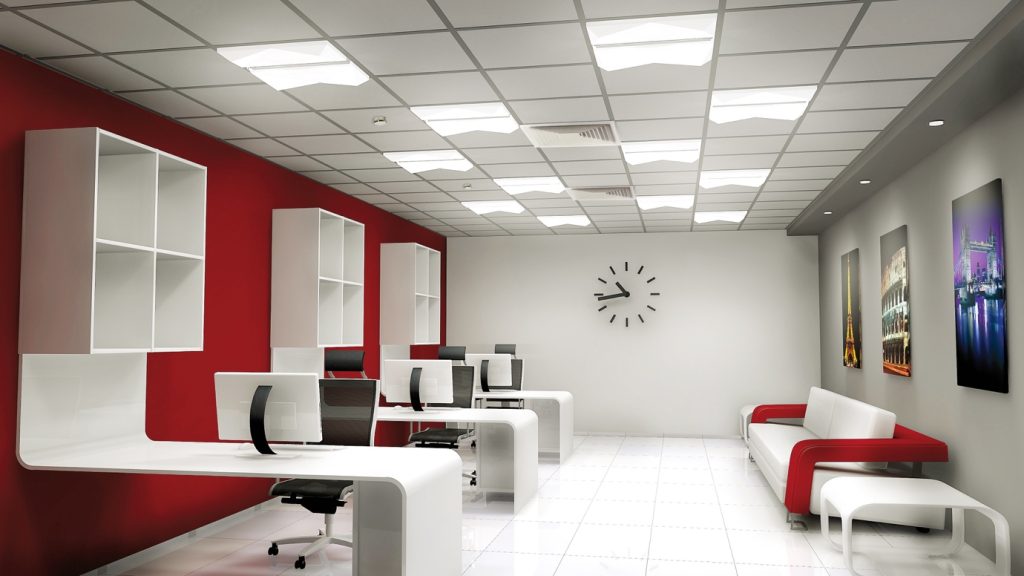
3. Direct vs. Indirect Lighting
One of the main choices that needs to be made with regards to lighting design. Both direct and indirect lighting have their uses. Essentially, the question boils down to one of visual comfort. Direct lighting is energy efficient and good at ‘zoning’ certain areas in a workspace but tends to be stark and visually harsh on employees. Direct lighting also suffers from uneven light distribution, with one worker getting too much lighting while their neighbour gets too little. As the light shines directly down from the ceiling, the ceiling is often the darkest part of the room, leading to ‘cave’ like conditions in the office. In contrast, indirect lighting provides a softer, more even distribution of light and makes a room look more appealing. In general however, research has shown that most employees prefer the feel of working under indirect lighting with some task lighting added in specific areas to be used when needed.
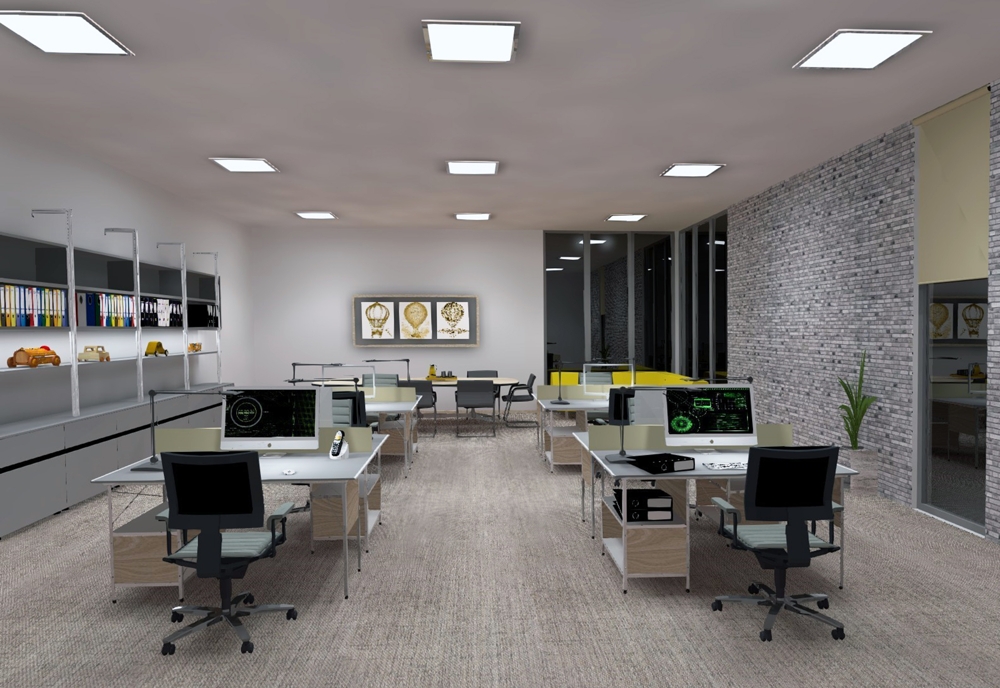
Direct Lighting

Indirect Lighting
4. Eco-friendly and Smart Lighting
With artificial lighting being the number one consumer of electricity in most offices, making up on average 35% of an offices total power consumption, it makes sense to invest into more efficient and eco-friendly technology. Improved efficiency, savings on utilities, reduced maintenance costs and reduction of your businesses carbon footprint are just some of the reasons why more and more businesses are investing in green technology for their fit outs. Technology such as LED lights, which use 20% less power and last 10 times longer than standard fluorescent lights help you save money, require less maintenance and are better for the environment than traditional lighting solutions. Smart lighting is another avenue in which businesses are investing. Office lighting that ‘learns’ your workplace usage patterns, adjusts itself to suit your employees’ preferences and automatically accounts for changes in natural light are just some of the advances that are slowly becoming part of the modern workplace.

Keeping these points in mind will go a long way in helping you create a modern office that keeps your employees healthy and motivated while reducing costs.
Looking to renovate your office? Perhaps you need a little help properly lighting your new workplace? Why not contact our team at Horton Interiors? Call us on +971 4 3 88 1163 or send us an email at info@hortoninteriors.com and we’ll be in touch.





